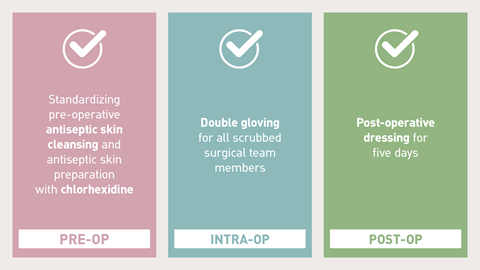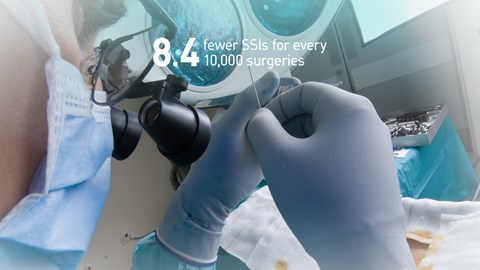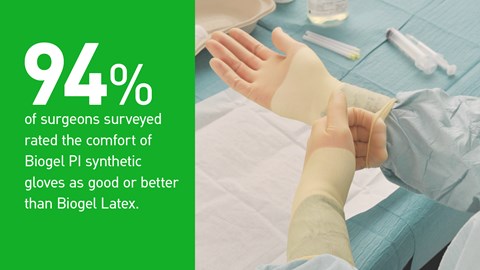
Minimizing glove failure is one way to protect both providers and patients, as well as a hospital’s bottom line. A cost-benefit analysis was able to quantify the value of more durable, higher-quality surgical Biogel gloves. Although higher-quality gloves might initially cost more, savings achieved by averting just one SSI would offset the cost of a full year’s supply of Biogel gloves. In fact, for every dollar spent on Biogel gloves, the hospital would save $18.68.
Read the AHRMM article, Improving Surgical Site Infection Prevention, to learn how investing in high-quality Biogel surgical gloves delivers better protection along with substantial savings.

SSIs are the #1 most costly Healthcare Associated Infection
An estimated 1.5 million SSIs occur each year, resulting in longer hospital stays, hospital readmissions, patient suffering and sometimes death. In addition to the patient impact, SSIs cost the U.S. health system from $3-$29 billion each year. With healthcare reforms, hospital reimbursement is now directly tied to key metrics, including SSIs that cost health systems millions in unrecovered costs each year.
Download Strategies for SSI Prevention with information on pre-op, intra-op and post-op infection prevention.

Glove perforations can increase the risk of SSIs to 6.9%.
Let’s calculate the potential savings for a sample 250 bed hospital with 10,000 surgical procedures.
✔ With Biogel gloves, less failures occur, and all associated costs are reduced including SSI related costs
✔ Biogel gloves can reduce SSIs resulting from glove perforations by 8.4
✔ The resulting potential savings for a 10,000-surgical procedure hospital could be $56 per surgery or approximately $560,000.
Our surgical specialists can work with your facility to determine what your potential savings could be.

Eliminating Latex from the O.R.
Eliminating latex gloves from the O.R. significantly reduces the potential health risk to patients and staff while delivering time and cost efficiencies to the hospital. Even with the added costs of synthetic gloves, hospitals can reduce total costs standardizing to Biogel synthetic gloves.
The Case for Eliminating Latex from your Facility
Previous synthetic gloves compromised dexterity and sensitivity. New research shows that most physicians find the new generation of synthetic, non-latex surgical gloves as effective and comfortable as their latex equivalents.
Why risk it?
- Latex allergy is present in one to five percent of the general population
- 34% of your O.R. staff is latex sensitive
- 58% of O.R.s report at least one teardown per month as a result of a late latex allergy discovery
A recent published study analyzed the clinical and operational costs related to the use of natural rubber latex gloves. The study found that the costs associated with latex allergy events and latex-related O.R. teardowns outweighed the line-item costs of synthetic or latex-free gloves. After the facility converted to Biogel synthetic gloves, they were able to reduce their overall costs by 25%, saving over $74,000.
Are your facility’s glove choices allowing safety and savings to slip through your fingers? Maybe it’s time to take a closer look at the power of a partnership with Mölnlycke. To learn more about the study or have a Biogel expert contact you, please click below.

Clinical Study
A retrospective case study at Alta Bates Medical Center in Berkley, California was conducted to quantify costs associated with converting from natural rubber latex to synthetic gloves.
Conclusion: Alta Bates 100% conversion to Biogel synthetic surgical gloves significantly:
- Reduced overall costs by 25% saving $74,542
- Eliminated Type 1 latex allergic events for both patients and staff
- Eliminated latex-related O.R. teardowns
- Improved patient and healthcare worker safety
'References'




